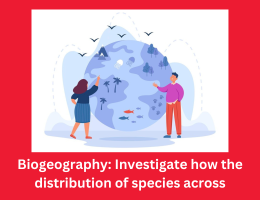
User Fossil Record and Transitional Forms
- By admin --
- Monday, 11 Mar, 2024
The fossil record stands as a monumental testament to the vast history of life on Earth, providing invaluable evidence for the process of evolution. Within this record lies a treasure trove of information, documenting the journey of life from its earliest origins to the diverse array of species that populate the planet today. One of the most compelling aspects of the fossil record is the presence of transitional forms, which offer a glimpse into the gradual transformation of species over time. These transitional fossils serve as crucial pieces of evidence supporting the concept of descent with modification, as proposed by Charles Darwin in his theory of evolution by natural selection.
Transitional fossils are those that exhibit traits characteristic of both ancestral and descendant groups, providing a bridge between distinct species or lineages. They offer tangible evidence of evolutionary change, illustrating how organisms have adapted and diversified over millions of years. The discovery of transitional forms not only confirms the interconnectedness of life but also sheds light on the mechanisms driving evolutionary processes.
One of the most famous examples of transitional fossils is Archaeopteryx, a creature that lived approximately 150 million years ago during the Late Jurassic period. Archaeopteryx possesses a fascinating combination of avian and reptilian features, making it a pivotal transitional form between dinosaurs and modern birds. It boasts feathered wings similar to those of birds, indicating an early stage in the evolution of flight. However, it also retains several reptilian traits, including a long, bony tail and teeth, highlighting its ancestral ties to dinosaurs. Archaeopteryx provides compelling evidence for the evolutionary transition from terrestrial reptiles to flying birds, illustrating how natural selection can drive the development of new adaptations over time.
Another remarkable example of transitional fossils is Tiktaalik roseae, an ancient fish-like creature that lived around 375 million years ago during the Late Devonian period. Tiktaalik possesses a unique blend of features characteristic of both fish and tetrapods (four-limbed vertebrates), making it an important transitional form in the evolution of vertebrate life on land. It exhibits fish-like traits such as scales and fins, indicating its aquatic lifestyle. However, it also possesses skeletal features associated with tetrapods, including a mobile neck, robust ribs, and primitive limbs with wrist-like structures. Tiktaalik represents a crucial intermediary stage in the transition from aquatic to terrestrial habitats, providing insight into the evolutionary processes that gave rise to land-dwelling vertebrates.
The discovery of transitional fossils like Archaeopteryx and Tiktaalik underscores the dynamic nature of evolution and the gradual accumulation of small changes over time. These organisms represent snapshots of evolutionary transitions, capturing pivotal moments in the history of life on Earth. By studying their anatomical features and ecological contexts, scientists can infer the selective pressures that shaped their evolution and contributed to the diversification of species.
Transitional fossils also play a crucial role in addressing gaps in the fossil record and filling in the missing pieces of evolutionary history. While the fossil record is incomplete due to factors such as preservation biases and the rarity of fossilization, transitional forms help bridge the divide between disparate groups of organisms. They provide tangible evidence for evolutionary relationships and help reconstruct the evolutionary pathways that have led to the emergence of new species.
In addition to individual examples like Archaeopteryx and Tiktaalik, broader patterns of transitional forms can be observed across various groups of organisms. For instance, the gradual transition from land-dwelling reptiles to marine mammals is documented in the fossil record through intermediaries such as Ambulocetus, a whale-like creature with terrestrial ancestry. Similarly, the evolution of horses from small, multi-toed ancestors to the single-toed equines of today is well-documented through a series of transitional forms spanning millions of years.
The study of transitional fossils not only enriches our understanding of evolutionary processes but also provides tangible evidence for the interconnectedness of life on Earth. It highlights the continuity of life over vast stretches of geological time and emphasizes the role of natural selection in shaping the diversity of species. As scientists continue to explore the fossil record and unearth new discoveries, the story of evolution unfolds with ever-increasing clarity, revealing the remarkable journey that has led to the wondrous variety of life forms that inhabit our planet today.





